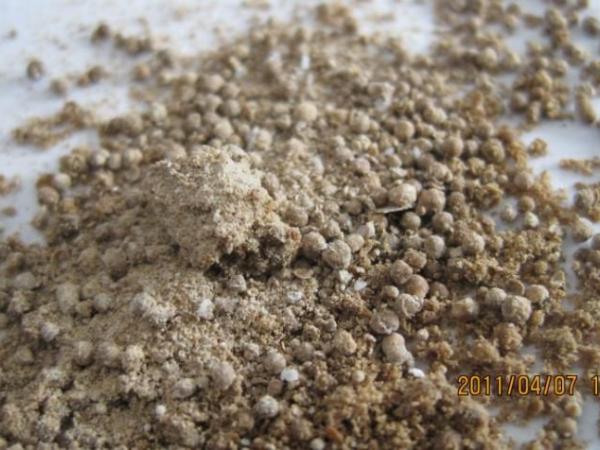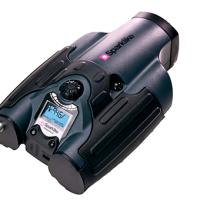Based on the irrefutable experimental results, we analyze that the most popular desiccant with calcium chloride or the similarities will corrupt the IG unit obviously. It will not only cut down the life span of the IG unit, but also destroy the safety of its structure.
The IG lifespan standard of 15 years will be taken in force this year
The standard means that all the IG unit manufactures must surely keep the lifespan of their IG units up to at least 15 years, or they will be fiercely claimed!
What is the expiration of IG Unit?
Answer: The rapid reduction or complete loss on energy-saving function of IG unit means the end of its service life. This means:
- Dew occur in the IG cavity
- Damage of low-E membrane
- Serious physical changing
To guarantee IG life-span need to overcome 3 points:
- Desiccant
- Sealant
- Processing control
Desiccant is the most essential one
- The most important kernel: Both IG processing and sealant selection arein order to protect desiccant.
- The most easy to be neglected: All performances of the desiccant will not be displayed immediately until a long time service in Insulating glass.
- Deep influence on IG quality: Bad desiccant can drive sealant, spacer or glass out of service invisibly. But few people notice these points.
- The most essential: In the condition of good-quality sealant service, IG lifespan depends on desiccant.
Four kinds of bad-quality desiccants in market
- 4A molecular sieve - Much in the market
- Lime desiccant - Rare in the market
- Calcium Chloride desiccant - A great much in the market
- Pure clay desiccant - Rare in the market
Four kinds of harmful desiccants total up a great market share, the mainly harmful one is Calcium Chloride desiccant, So it is necessary to test how the desiccant will perform in the IG unit.
The harm from 4 bad quality desiccants for IG
.jpg)
Click to enlarge UserFiles/tab1(10).jpg
The experiment on the effect of calcium chloride desiccant on IG unit
- Execution: Zibo Natergy Chemical Industry Co., Ltd.
- Target: The effect of calcium chloride desiccant on IG unit
- Test Method: observation on insulating glasses (70mm x 70 mm,variously filled with O2,air,N2) which are made from various adsorbed desiccants.
- Test condition: Keep insulating glasses at 50℃for 9 months, then observe the changing
- Insulating glass manufacture: Zibo Shengda Glass Co., Ltd.
- (IG material resource):
- Glass, 9A aluminum spacer, butyl and polysulfide sealant (liniz), are supplied by Zibo Shengda Glass Co., Ltd.
- Molecular sieve 3A is supplied by Zibo Natergy Chemical Industry Co., Ltd.
- Calcium chloride desiccant, supplied by an end user.
The effect of desiccants on IG unit
.jpg)
Click to enlarge UserFiles/tab2(14).jpg
Photos for the effect ofdifferent desiccants on IG after 9 months at 50 C°
.jpg)
Photo for the effect of 30% water content CaCl2Desiccant on IG (air) after 9monthsat 50 C°
.jpg)
Photo for the effect of 30% water content 3A molecular sieve on IG (air) after 9monthsat 50 C°
Photos for the effect of different desiccants on IG after 9months at 50 C°
.jpg)
Photo for the effect of 30% water content CaCl2Desiccant on IG (air) after 9 months at 50 C°
.jpg)
Photo for the effect of 30% water content CaCl2Desiccant on IG (Oxygen) after 9 months at 50 C°
Photos for the effect ofdifferent desiccantson IG after 9monthsat 50 C°
.jpg)
Photo for the effect of 20% water content CaCl2Desiccant on IG (argon) after 9 months at 50 C°
.jpg)
Photo for the effect of 30% water content CaCl2 Desiccant on IG (oxygen) after 9 months at 50 C°
The photos of eroded aluminum bar
.jpg)
.jpg)

The eroded and crackingaluminum spacer bar
.jpg)
.jpg)
The desiccant has already pulverized and mixed with crystal
Rainbow phenomenon on CaCl2filling IG Unit

No rainbow on 3A IG unit

Rainbow appear on CaCl2filling IG Unit
.jpg)

Analyzing photos of rainbow phenomenon

The rainbow do not disappear after opening the insulating glass, It concludes that the rainbow is not water vapor.

The next testing shows the glass is covered with oil vapor, it can be wiped away with hand.
Conclusion: In the same case, no rainbow phenomenon occurs on the 3A molecular sieve filling IG unit, this means Calcium chloride desiccant will effect sealant heavily.
Experiment summarize
- Molecular sieve 3A will not do any harm to IG unit at any conditions
- Calcium chloride desiccant has corrosiveness and the corrosiveness become stronger according with the accumulation of water adsorption.
- Oxygen can protect the aluminum spacer bar in a certain extent, so the IG unit filled with oxygen has the lower corrosiveness. On the contrary, the argon filled insulating glass is much worse corrupted than the oxygen one.
- Calcium chloride desiccant can corrupt aluminum bar at a rapid speed, once it adsorbed enough water it can drive spacer stained within one week, and break spacer within several months, accompanied lots of crystal calcium chloride.
- Calcium chloride desiccant can easily destroy butyl, the destroyed butyl vapor up onto the glass, then form the rainbow phenomenon. The rainbow can be wiped by hands, it’s the volatiles of the damaged butyl.
- Calcium chloride desiccant is transferable and easy pulverized, the powder goes out through the bar apertur, then fasten the corrosion and stain the glass.
Conclusion
In conclusion, calcium chloride desiccant destroy the insulating glasses in 4 aspects.
- Destroy the appearance of glass; Aluminum bar corrupted; Crystal extruded; Rainbow occur; Desiccant powder stain glass
- Shorten lifespan of insulating glass; Aging and destroy sealant
- Damage energy-saving; Because of the acid vapor exist in the IG space, Low-e membrane tend to be corrupted.
- Dangerous to use calcium chloride as IG desiccant.
The sealant and spacer is the backbone of IG unit, long term corruption will possibly cause serious safety problem, a large sheet glass may fall from height and it is a innegligible problem.
Zibo Natergy Chemical Industry Co.,Ltd.
Mr. Liu Angfeng
Tel.:13953393302
E-mail: liu-angfeng@natergy.com
Web: www.natergy.com
www.natergy.com/en/onews2.asp


















